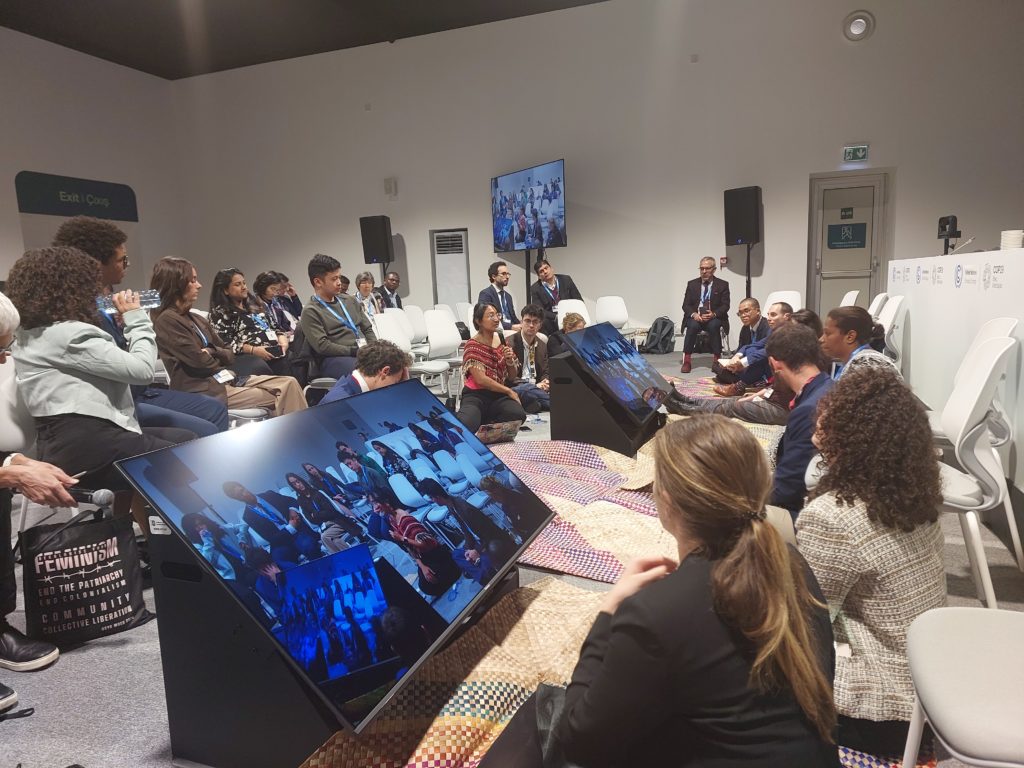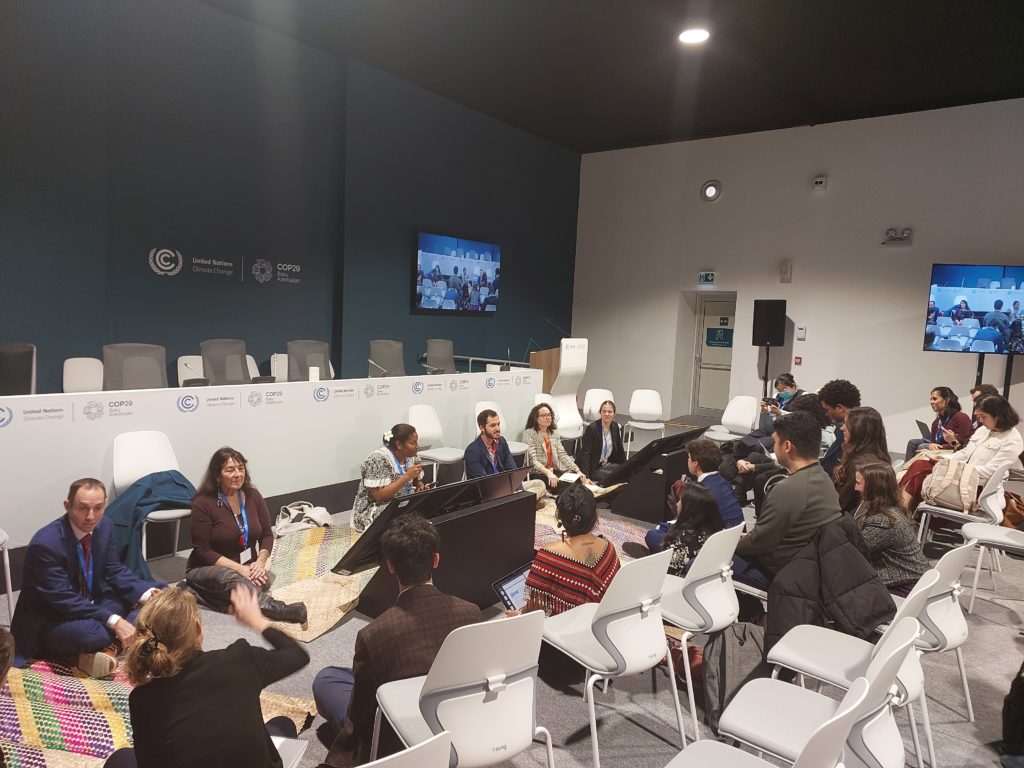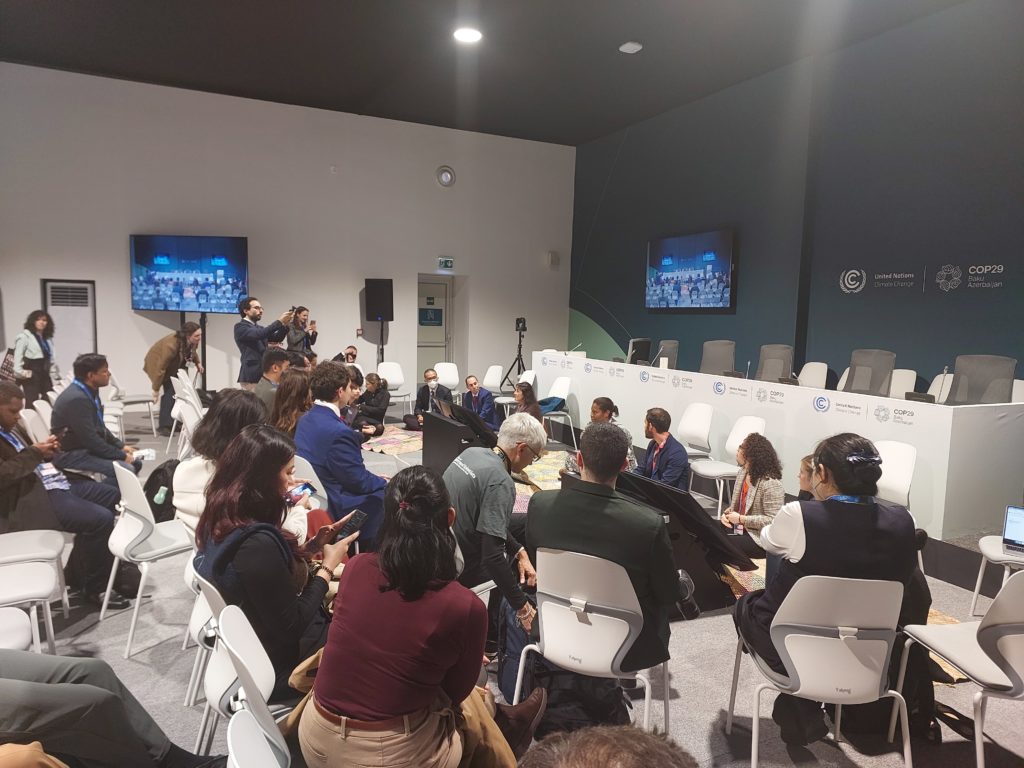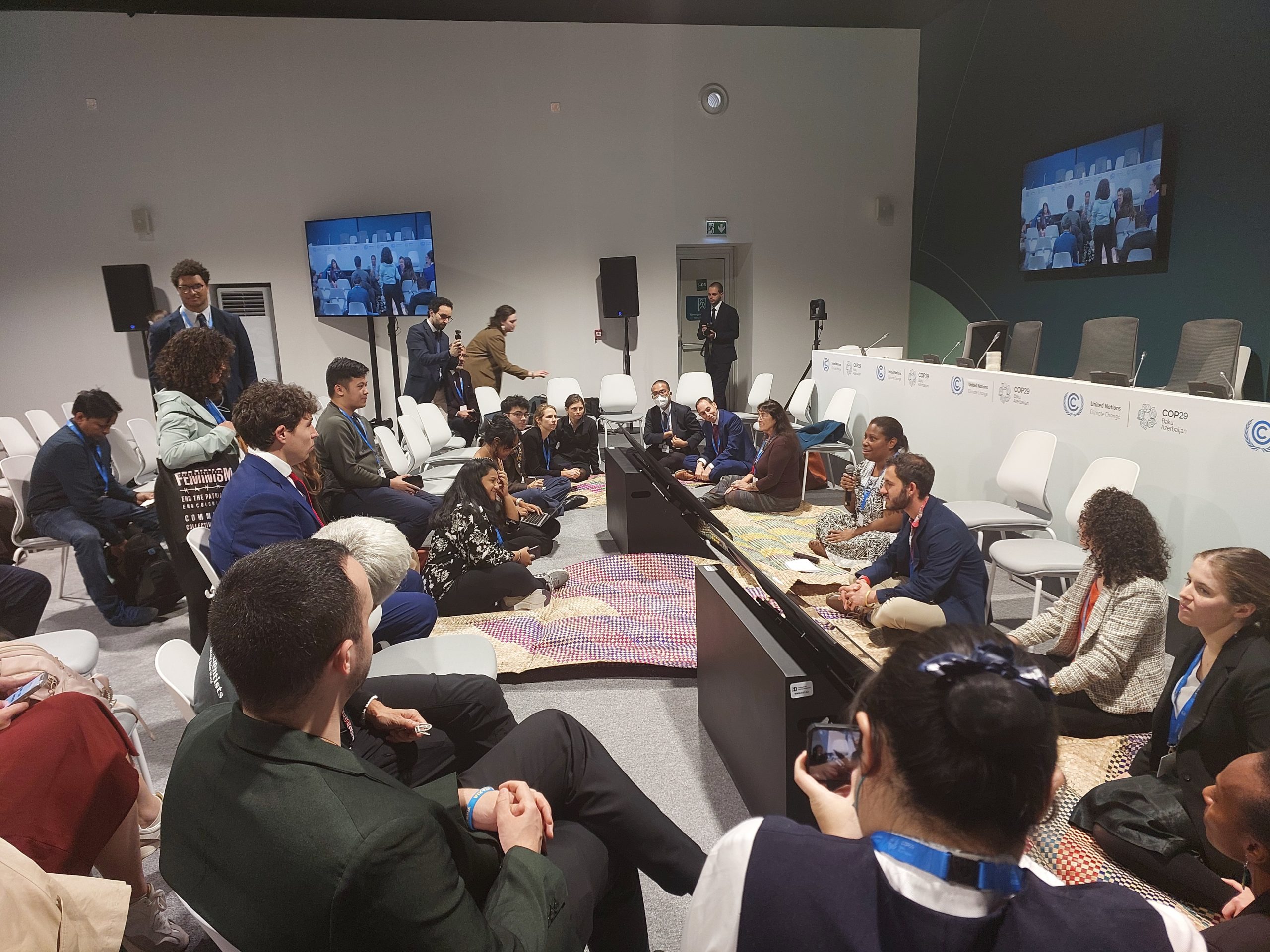by Ben Te and Jayvy R. Gamboa
How has the International Loss and Damage Architecture developed over the past year?
What can we learn from communities on the ground?
Are we doing enough in the fight against climate change?
These were the questions that we sought to answer at COP29 in Baku. The Manila Observatory, together with the Vanuatu Government, the Baha’i International Community, and the International Centre for Climate Change and Development organized a Side Event entitled “International Loss and Damage Architecture A Year Out: Learning from the Experiences in the Most Vulnerable SIDS” (https://www.wri.org/events/2024/11/international-loss-and-damage-architecture-year-out-learning-experiences-most) to confront these difficult questions. This forum focused on facilitating a discussion among different groups and communities and the sharing of their experiences with Loss and Damage from the ground through the indigenous deliberative process called “tok storian”.

The event was an amazing opportunity to hear stories from indigenous peoples, climate advocates, and community leaders as to how they perceive and understand Loss and Damage. More importantly, they were able to impart their knowledge about how different communities and indigenous peoples all over the world respond to the challenges of climate change.
Some key ideas that were highlighted during the discussions include how the false dichotomy between economic and non-economic losses and damages fails to consider indigenous and local lived realities where cultural heritage and identities are closely linked with livelihood and natural resources. It was also emphasized how indigenous knowledge should be recognized as a science in itself and that indigenous peoples are scientific experts in their own right owing to their historical relationship with the land and nature.
Participants were also able to share their thoughts and assessment on COP and the UNFCCC system as a whole. Some expressed their doubts and concerns as to whether the current trajectory of climate negotiations would truly be able to timely respond to the climate crisis. The difficulties for marginalized groups and vulnerable communities to access and be involved in the climate process also shed light on the limited space for democratic participation. Moreover, the more crucial question was whether governments would truly be able to rise above geopolitical issues, market-driven priorities, and influence of corporate interests in order to sincerely arrive at the necessary agreements in order to truly address climate change.

Despite these challenges, the prevailing sentiment was one of unwavering hope and optimism driven by passion, a collective desire to end human pain and suffering, and a recognition that people can recognize their shared aspirations for a better future. The role of civil society in paving the path towards this vision was underscored, where indigenous peoples, the youth, and other vulnerable groups have a responsibility to act and demand governments to address climate change and its impacts with greater urgency. The struggle for climate justice and accountability does not end at COP29 in Baku but shall continue on the ground, in communities, and in every place where power must be confronted and held to account.
This event was also co-organized with the Allied for Climate Transformation by 2025 (ACT2025). ACT2025 is a consortium of think tanks and experts elevating the needs and priorities of vulnerable developing countries to deliver ambitious, balanced, just, and equitable outcomes at the UN climate negotiations and other multilateral fora to chart a path toward greater global solidarity.

For more information on ACT2025, visit https://www.wri.org/initiatives/allied-climate-transformation-act2025.

